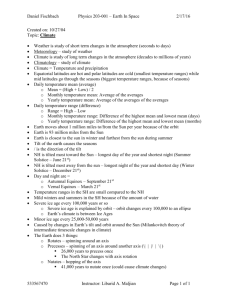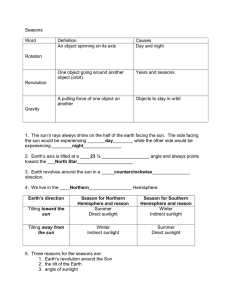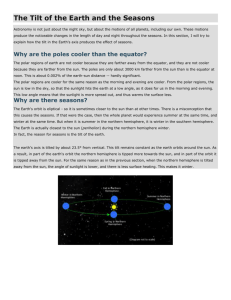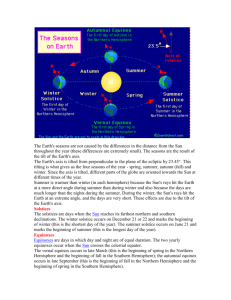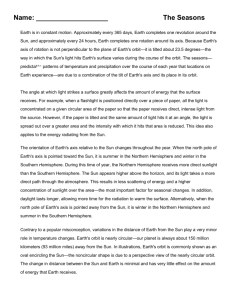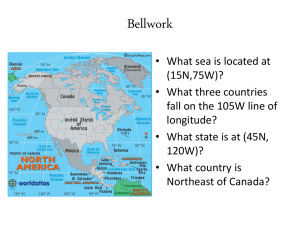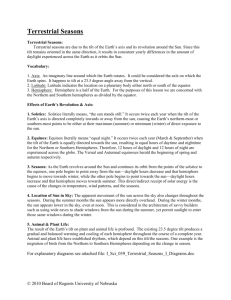Seasons Article Quiz
advertisement
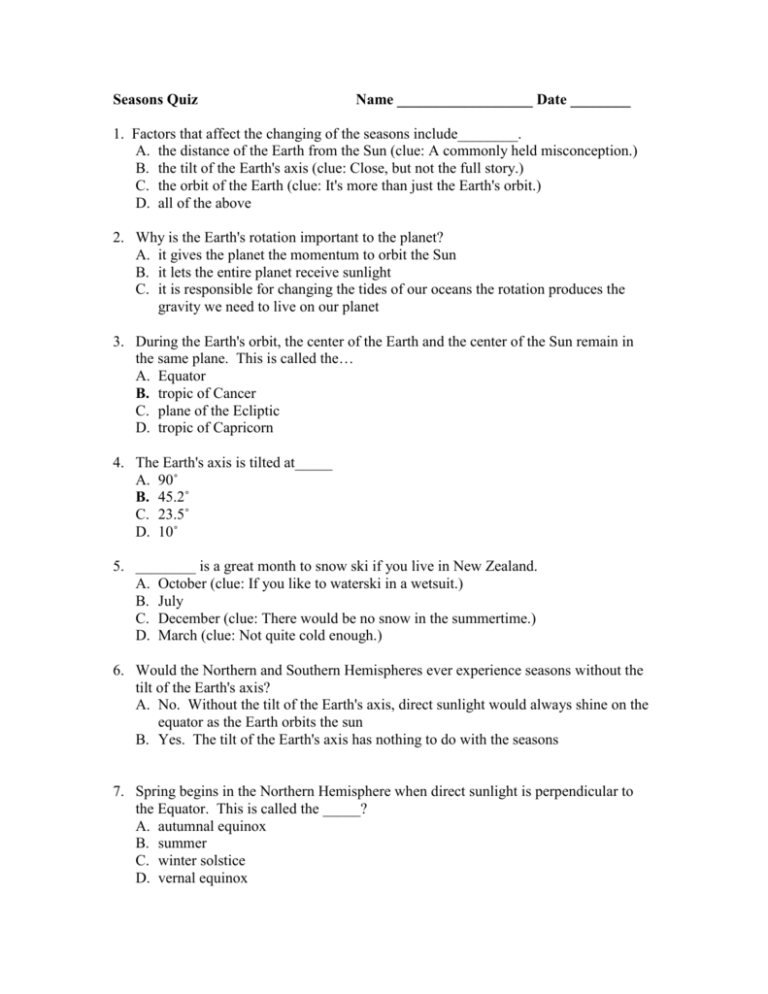
Seasons Quiz Name __________________ Date ________ 1. Factors that affect the changing of the seasons include________. A. the distance of the Earth from the Sun (clue: A commonly held misconception.) B. the tilt of the Earth's axis (clue: Close, but not the full story.) C. the orbit of the Earth (clue: It's more than just the Earth's orbit.) D. all of the above 2. Why is the Earth's rotation important to the planet? A. it gives the planet the momentum to orbit the Sun B. it lets the entire planet receive sunlight C. it is responsible for changing the tides of our oceans the rotation produces the gravity we need to live on our planet 3. During the Earth's orbit, the center of the Earth and the center of the Sun remain in the same plane. This is called the… A. Equator B. tropic of Cancer C. plane of the Ecliptic D. tropic of Capricorn 4. The Earth's axis is tilted at_____ A. 90˚ B. 45.2˚ C. 23.5˚ D. 10˚ 5. ________ is a great month to snow ski if you live in New Zealand. A. October (clue: If you like to waterski in a wetsuit.) B. July C. December (clue: There would be no snow in the summertime.) D. March (clue: Not quite cold enough.) 6. Would the Northern and Southern Hemispheres ever experience seasons without the tilt of the Earth's axis? A. No. Without the tilt of the Earth's axis, direct sunlight would always shine on the equator as the Earth orbits the sun B. Yes. The tilt of the Earth's axis has nothing to do with the seasons 7. Spring begins in the Northern Hemisphere when direct sunlight is perpendicular to the Equator. This is called the _____? A. autumnal equinox B. summer C. winter solstice D. vernal equinox 8. Spring begins in the Southern Hemisphere when direct sunlight is perpendicular to the Equator. This is called the _____? A. autumnal equinox B. summer solstice C. winter solstice D. vernal equinox 9. What is the Perihelion? A. a festival celebrating the first day of spring B. a name you call someone who doesn't know what causes seasons C. the furthest distance between the Earth and Sun, during the Northern Hemisphere's summer D. the closest distance between the Earth and Sun, during the Northern Hemisphere's winter


